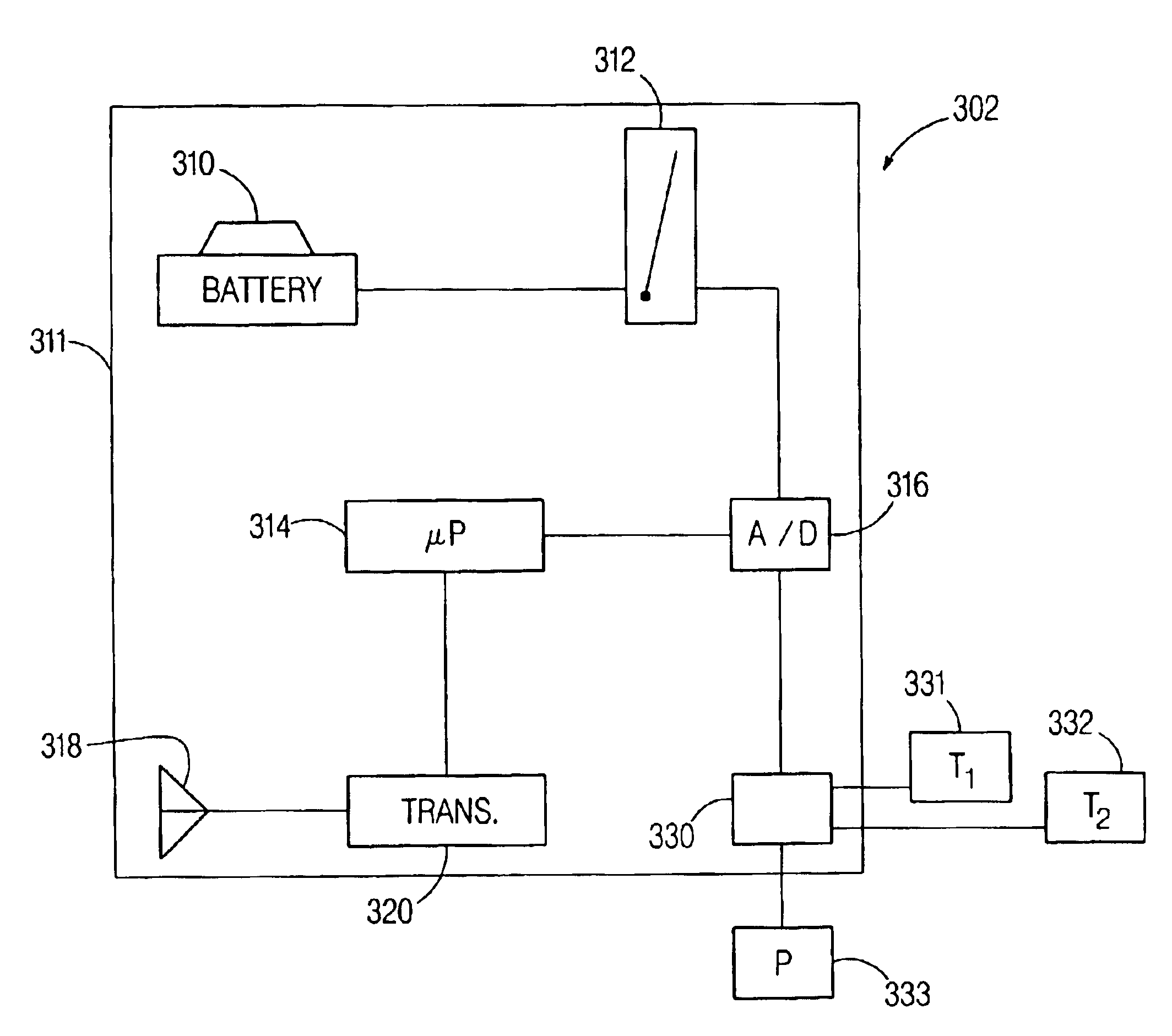Energy conservation in battery powered tag
a battery-powered, energy-saving technology, applied in the direction of instruments, ways, high-level techniques, etc., can solve the problems of poor road handling, excessive tire wear, poor gasoline mileage,
- Summary
- Abstract
- Description
- Claims
- Application Information
AI Technical Summary
Benefits of technology
Problems solved by technology
Method used
Image
Examples
Embodiment Construction
[0040]FIG. 1 illustrates a typical tire pressure monitoring system (TPMS) 150 of the prior art installed on a vehicle 152 (shown in dashed lines), such as a typical passenger vehicle having four pneumatic tires 104a, 104b, 104c and 104d (104) installed on four respective wheels (not shown).
[0041]Each of the four tires 104a . . . 104d (104) is equipped with an electronic module (“tag”) 102a . . . 102d (102), respectively, and associated sensor(s) (not shown, well known) capable of monitoring one or more conditions such as air pressure and / or air temperature within the tire, and transmitting a radio frequency (RF) signal indicative of the monitored condition(s) within the respective vehicle tire 104. The tags 102 are suitably transponders, but may alternatively simply comprise one or more condition sensors and a radio frequency transmitter. For the purposes of this detailed description, the terms “tag” and “transponder” will be used interchangeably and are intended to refer to the ele...
PUM
| Property | Measurement | Unit |
|---|---|---|
| distance | aaaaa | aaaaa |
| distance | aaaaa | aaaaa |
| length of time | aaaaa | aaaaa |
Abstract
Description
Claims
Application Information
 Login to View More
Login to View More - R&D
- Intellectual Property
- Life Sciences
- Materials
- Tech Scout
- Unparalleled Data Quality
- Higher Quality Content
- 60% Fewer Hallucinations
Browse by: Latest US Patents, China's latest patents, Technical Efficacy Thesaurus, Application Domain, Technology Topic, Popular Technical Reports.
© 2025 PatSnap. All rights reserved.Legal|Privacy policy|Modern Slavery Act Transparency Statement|Sitemap|About US| Contact US: help@patsnap.com



